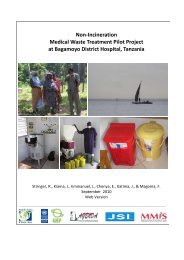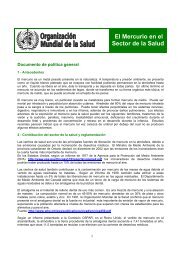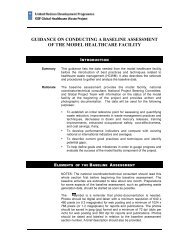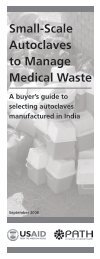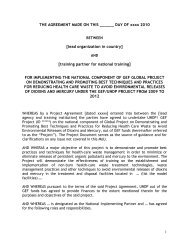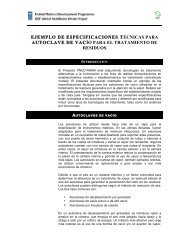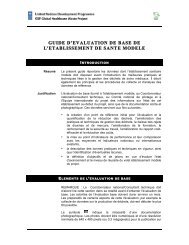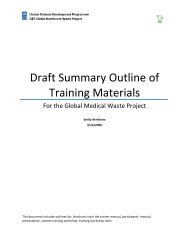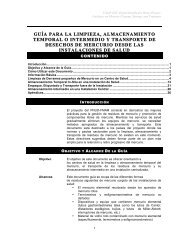Latvia
Latvia
Latvia
Create successful ePaper yourself
Turn your PDF publications into a flip-book with our unique Google optimized e-Paper software.
Health systems in transition<br />
<strong>Latvia</strong><br />
competitive procurement tenders. These procedures do not concern private<br />
sector institutions, which manage purchases on their own and also pay on<br />
their own.<br />
If the purchase of large medical technologies for hospitals is to be<br />
financed from state or local government budgets, the need, profitability, cost<br />
and conformity with modern technologies of the purchase are assessed by<br />
the Department of Project Assessment and Surveillance as well as by the<br />
Department of Health Care Analysis and Development within the HSMTSA<br />
(for example, medical radiology devices, anaesthesiology devices, operating<br />
rooms and intensive therapy, as well as other medical devices for diagnostics<br />
and treatment) (see Section 4.2 Planning and information management, as well<br />
as Chapter 7 Principal health care reforms for discussion on this).<br />
The need for a particular technology is assessed by analysis of statistical<br />
information regarding the number and load of the current technological level<br />
of existing medical devices. The purchase, which is carried out in accordance<br />
with the Master Plan, is intended to ensure patient access and a well-balanced<br />
geographical distribution of large medical devices within the country. For<br />
example, the HSMTSA refused the purchase by the Aizpute Hospital of a new<br />
Roentgen device, at a cost of LVL 200 000, which was to use state budget<br />
resources on the grounds of changes in population morbidity, the low load of<br />
the existing Roentgen device, as well as expected incorporation of this hospital<br />
into the new structure of a regional multi-profile hospital.<br />
In the case of large medical technologies in PHC, it should be noted that<br />
90% of dental practices are equipped with dental Roentgen devices, which<br />
are financed by the practice (as most dentists are private practitioners), or,<br />
in the case of state dentistry centres, are financed by means of the procedure<br />
described above. In other practices (family doctors, internists, paediatricians)<br />
there is a lack of diagnostic radiological devices (Databases of the HSMTSA<br />
2007 [unpublished data]).<br />
In other ambulatory health care institutions (both primary and secondary<br />
care levels), provision with this equipment varies, but on average it is quite<br />
low; for example, 1.7% of practices have fluorographs; 3.9% have radiological<br />
equipment, and 1.3% are able to offer ultrasound services (Databases of the<br />
HSMTSA 2007 [unpublished data]).<br />
Provision of medical technologies in inpatient health care institutions<br />
differs significantly. For example, 74.3% have radiological devices, 15.6%<br />
offer mammography services, 29.4% have computertomography equipment,<br />
and 54.1% offer ultrasound services. MRI and CT coverage per 100 000 is<br />
0.3 and 1.8, respectively. The purchase of medical devices in state and local<br />
government health centres is carried out in accordance with the procedures<br />
140





